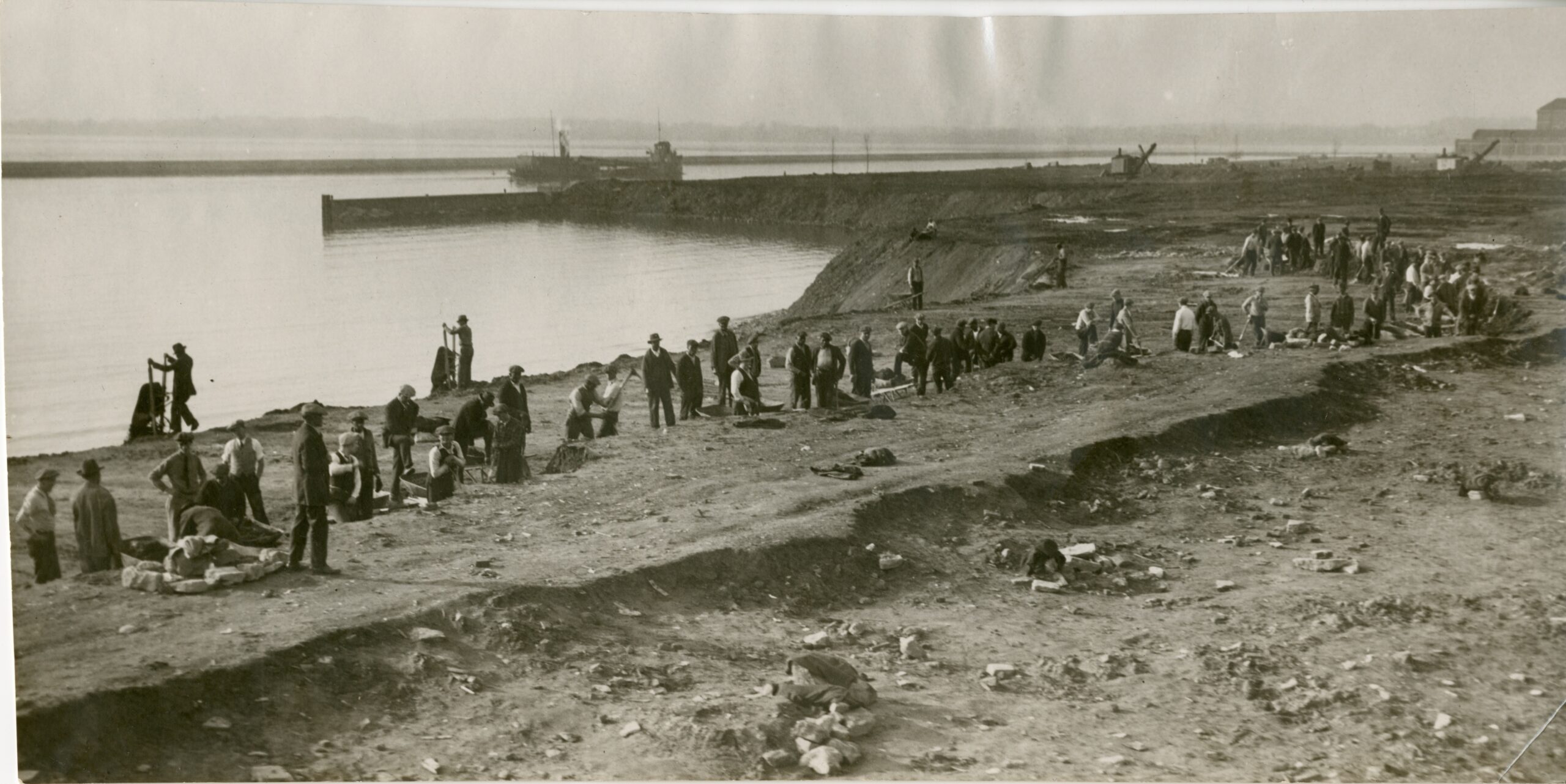
On July 1, 1932, Buffalo started a 10-day celebration for its 100th birthday. This centennial celebration brought massive crowds from near and far to the land today being redesigned as Ralph Wilson Park. Prior to the centennial there wasn’t much of a park in this location, but considerable efforts dredging the lake bed to produce parklands was done to host this important event. The 1932 celebration was covered widely by newspapers, records still archived at the Buffalo History Museum. The media reported on many details, from the members of the planning committee to the companies present at the Business Expo. They highlighted big events, including ceremonial reveals of two new statues featuring U.S. presidents Millard Fillmore and Grover Cleveland. Reading the history of the celebration is fascinating, the event was a historic one for the city and for the park. But, despite the many names the newspapers mention, let’s consider whose names were left out. History is filled with invisible contributors. On this anniversary of the Buffalo centennial and the official creation of this park, the Conservancy would like to call attention to those that history forgot.
In a rare glimpse at history’s invisibles, the Buffalo Evening News published the above photo of workers leveling ground. They are preparing the land for the construction of Centennial Park, the land today being redesigned as Ralph Wilson Park. No names were listed, but it’s clear their hands would shape the land into a form still visible today. Who were they? Did they live nearby or travel when news of opportunities to earn income spread? How much were they paid for reshaping a park generations later would utilize?
While we don’t know the names of those in this photo nor all who built the park, we can paint a picture of the laborers who shaped Buffalo in the 1930s thanks to this death register from the Erie County Home & Infirmary. This record posted by the Buffalo & Erie County Public Library only includes those who died at this local institution for the poor and doesn’t specify where they were employed. However, names and details of those listed as laborers help paint a picture.
So who were Buffalo’s day laborers in the 1930s, when the city needed to construct park lands to support expo halls, parking lots, and concessions? They were usually men, often first-generation immigrants. Many hailed from Europe, especially England, Ireland, Poland, Italy, and Austria. In 1932, our laborers likely worked extremely long days, taking home as little as $1 per day to families with many children to feed. At the time of Buffalo’s preparations for the centennial, the United States was still six years away from passing the Fair Labor Standards Act (FLSA). According to the US Department of Labor, this labor law gave us “a ceiling for hours, a floor for wages, and a break for children.” In other words, it established our country’s policies on minimum wage, overtime pay, and child labor protections. Our day laborers would not have had access to these protections yet, nor resources should they become injured during the manual labor. This is why some ended up in institutions like the Erie County Home & Infirmary (and in the years preceding that, the Erie County Alms House and Erie County Poor House). They received little credit for their contributions overall. That is why almost a century later we only find their names in the death registers for the poor and not in the abundant news articles and centennial programs most event goers would have read.
This week, as we celebrate the anniversary of the centennial celebration that started the era of our park’s history as a community greenspace, we wanted to shine a light on these forgotten contributors. One way we can pay tribute is to remind our community they existed. Next time you are walking in places likely shaped by an early 20th century day laborer, consider their impact on our city. Their influences on Buffalo and public lands like our park deserve a place alongside historical acknowledgements of our great political leaders, park designers, and financial contributors. A celebration of Buffalo’s history should include wide recognition of those who built it, including the names that history forgot.
Lead photo caption and credit: Picture of laborers working at the park in 1931, published in the Buffalo Evening News. Credit: Collection of The Buffalo History Museum. General photograph collection, Parks-Buffalo and Erie County- Ralph C. Wilson Jr. Centennial- Centennial Park.
This article is part of the conservancy’s Heritage Engagement Project.









